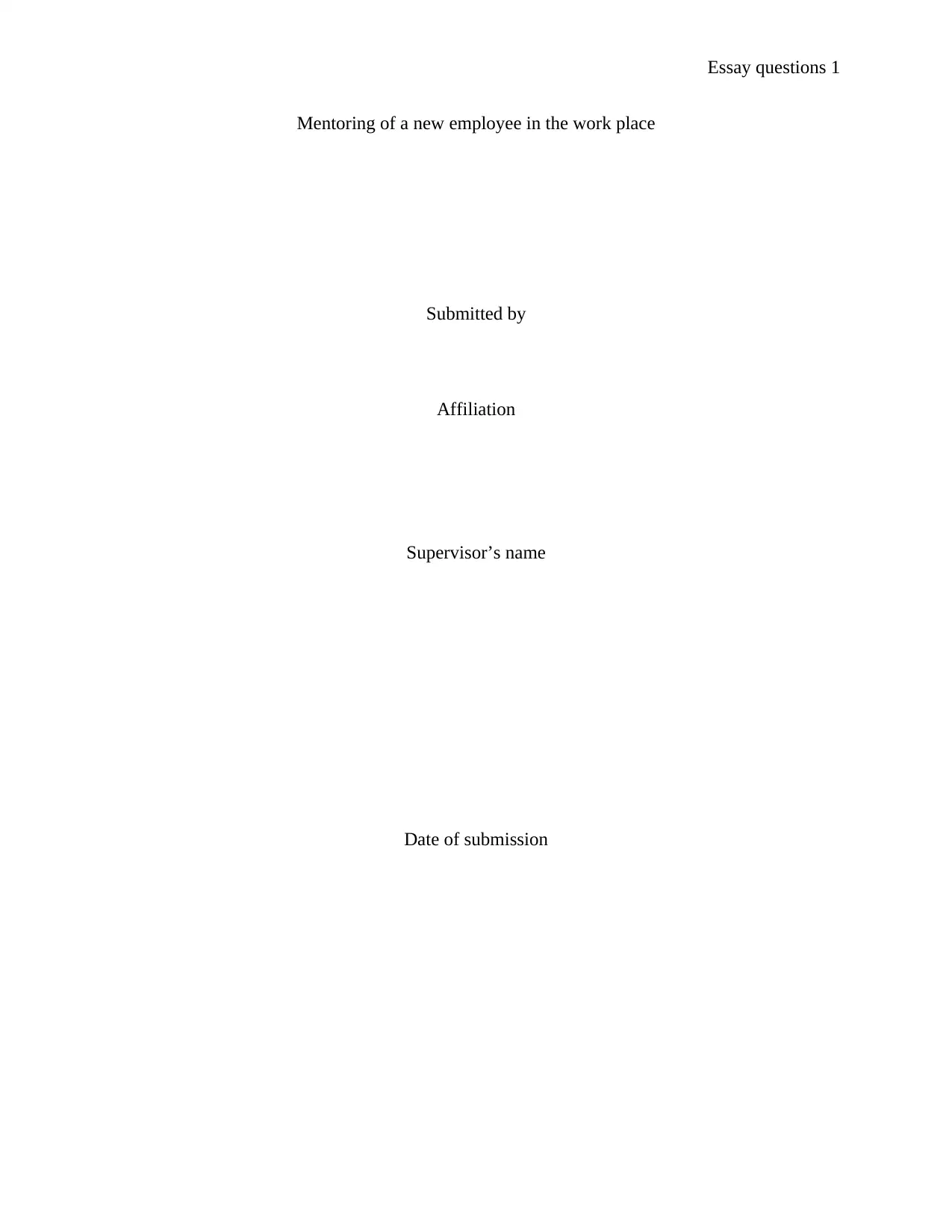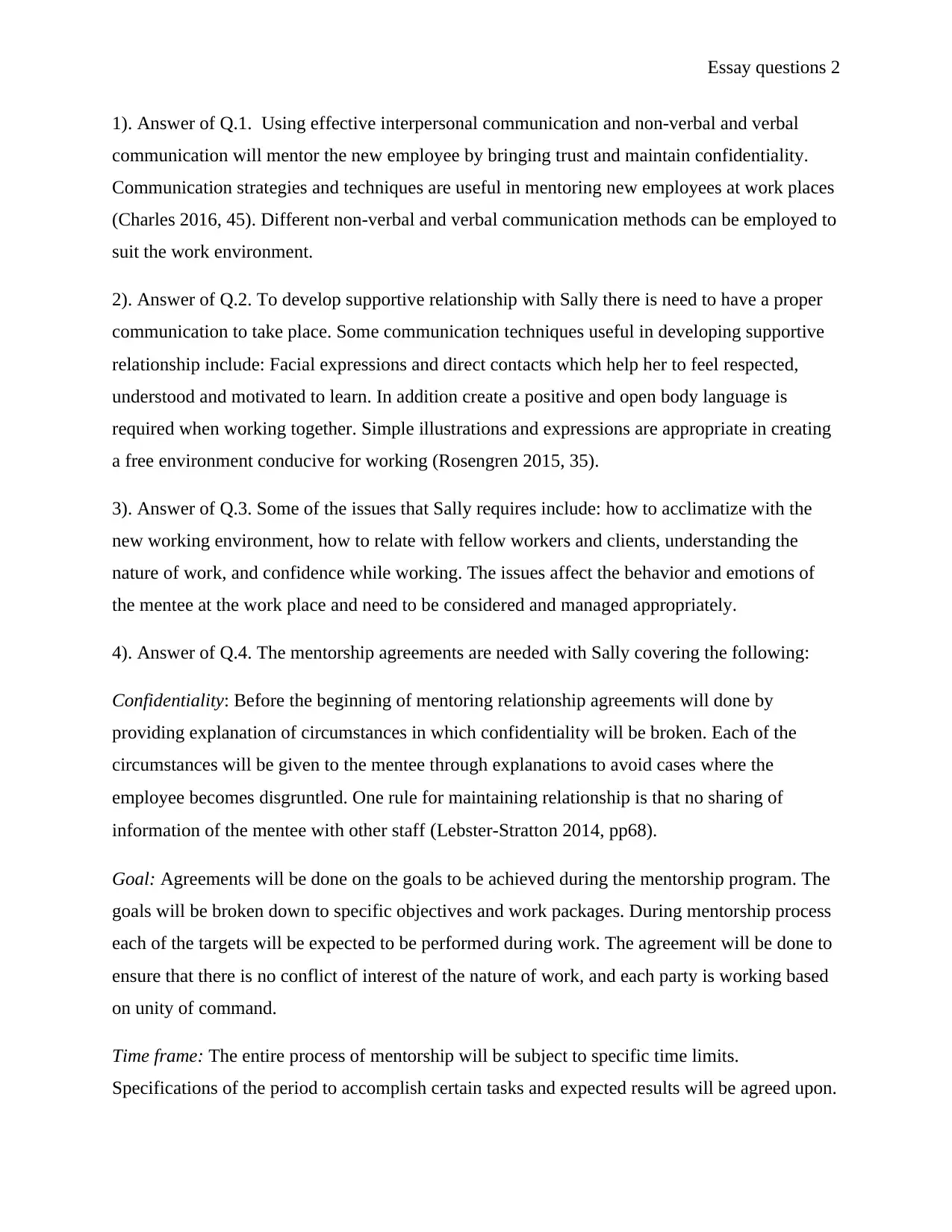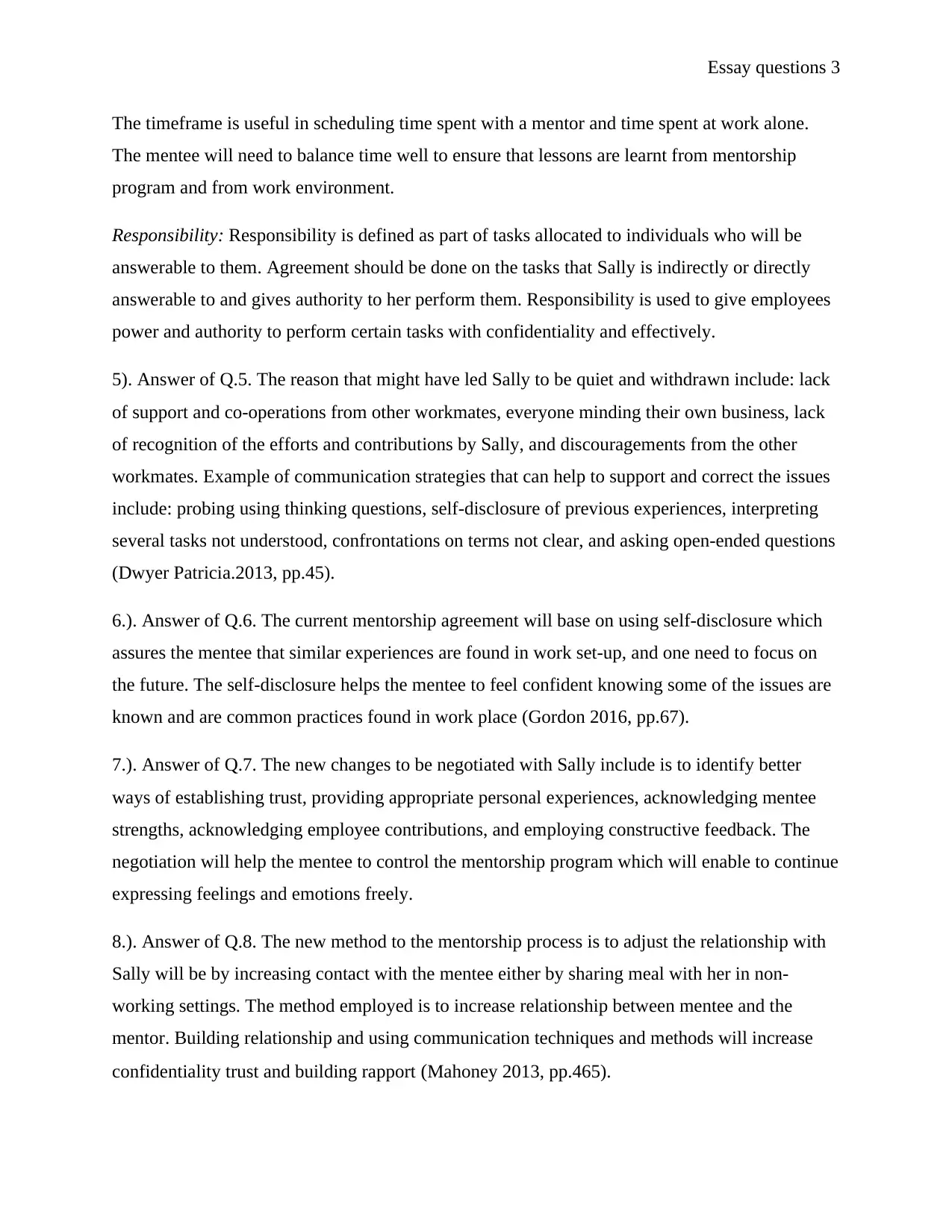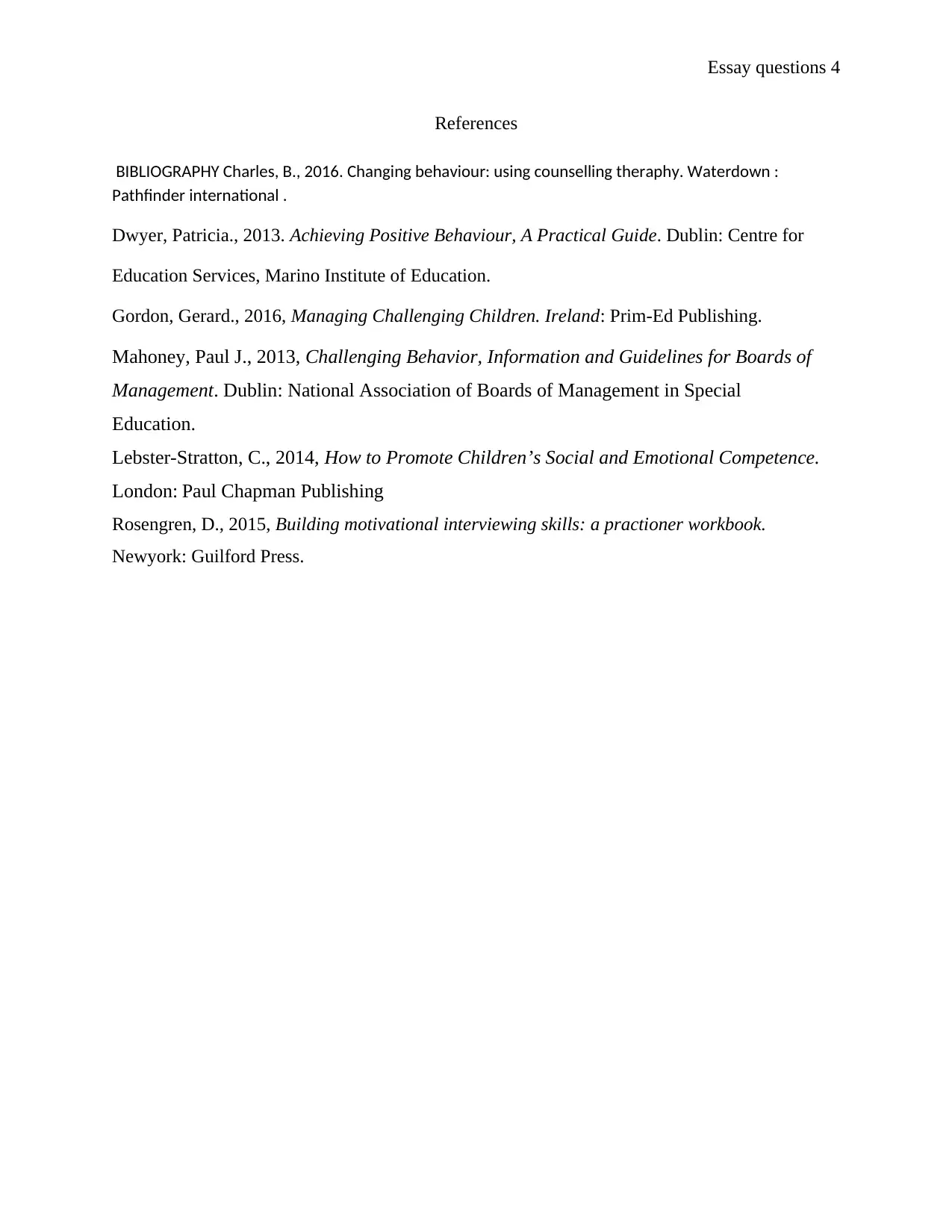Essay: Mentoring of a New Employee in the Workplace
VerifiedAdded on 2020/03/23
|4
|978
|265
Essay
AI Summary
This essay addresses the key aspects of mentoring a new employee in the workplace. It explores effective communication strategies, including verbal and non-verbal methods, to build trust and maintain confidentiality. The essay delves into developing supportive relationships, emphasizing facial expressions, body language, and open communication. It identifies potential issues faced by new employees, such as acclimatization and confidence, and proposes solutions. Furthermore, the essay outlines the components of a mentorship agreement, covering confidentiality, goals, time frames, and responsibilities. It analyzes reasons for employee withdrawal and suggests communication strategies like probing and self-disclosure. The essay also discusses the negotiation of new changes to enhance the mentorship program and the use of increased contact to build rapport and strengthen the mentor-mentee relationship. References from various authors support the strategies and concepts discussed.
1 out of 4






![[object Object]](/_next/static/media/star-bottom.7253800d.svg)